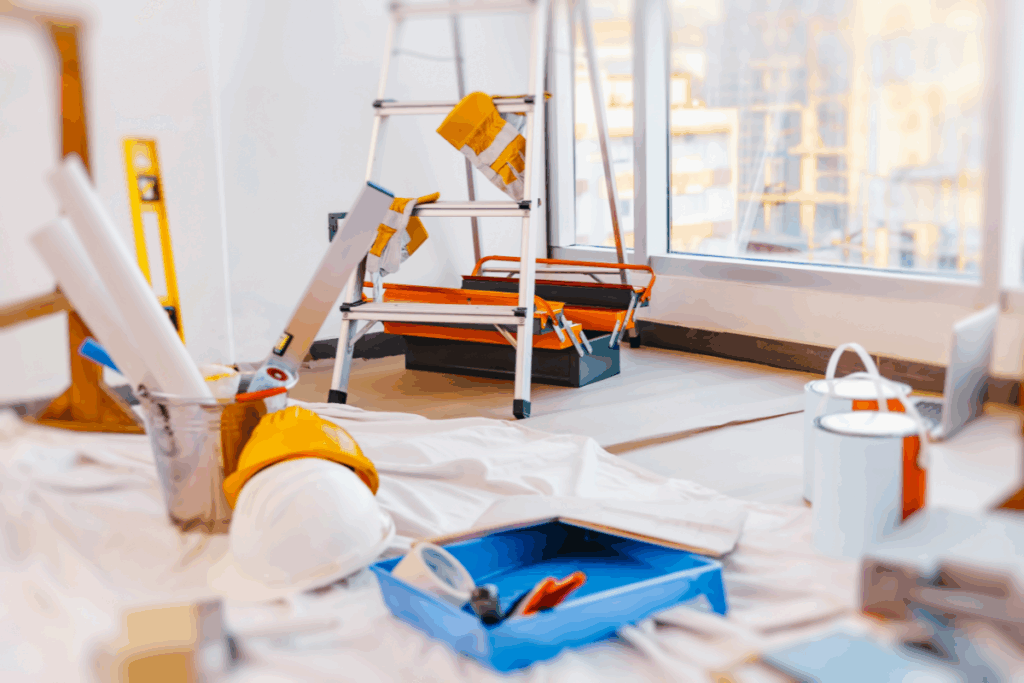Whether you’ve just collected the keys to your BTO flat or secured a charming resale unit in a mature estate, renovating your HDB home is a significant milestone for many Singaporeans. It’s more than just a cosmetic upgrade—it’s a deeply personal journey of transforming a blank slate into a sanctuary that reflects your lifestyle, personality, and aspirations.
However, with the excitement also comes a fair share of challenges. Unlike private properties, HDB flats come with a unique set of constraints. From space limitations and regulatory requirements to navigating shared infrastructure and noise curfews, the renovation process can feel daunting without the right knowledge and preparation.
This comprehensive guide is tailored to help you navigate the world of HDB renovations in Singapore—whether you’re doing it for the first time or giving your space a well-deserved makeover.
Planning and Budgeting: Building on Solid Ground
Before you even speak to a contractor or scroll through Pinterest for inspiration, sit down and crunch the numbers. Setting a realistic renovation budget is key to avoiding financial strain and project delays.
How Much Should You Budget?
On average, an HDB renovation can range from $20,000 to over $80,000, depending on whether it’s a BTO or resale flat, and how extensive the works are. Resale flats typically cost more due to hacking, retiling, and rectification works.
Common Costs to Account For:
- Contractor/ID Fees: Approximately 20%–30% of your total renovation cost.
- Carpentry: Built-ins like wardrobes, kitchen cabinets and feature walls can take up a large chunk.
- Electrical & Plumbing: Especially important if your layout is being reconfigured.
- Materials: Flooring, tiles, sanitary fittings, paint, etc.
- Furniture & Appliances: Often budgeted separately but equally vital.
- Miscellaneous: Site cleaning, haulage, aircon trunking, etc.
Money-Saving Tips:
- Keep built-ins to a minimum and opt for loose furniture when possible.
- Reuse existing structures in resale flats (if still in good condition).
- Compare quotes from at least three contractors or IDs.
- Schedule your renovation during non-peak seasons to possibly secure discounts.
Always Set Aside a Contingency Fund
Allocate about 10–15% of your total budget for unexpected costs. You never know when you’ll encounter hidden plumbing issues, or discover uneven flooring that needs to be relevelled.
Regulations and Permits: Staying Within the Lines
Renovating an HDB flat isn’t a free-for-all. The Housing & Development Board (HDB) has a clear set of guidelines designed to protect the integrity of the building and ensure the comfort of all residents.
Key HDB Renovation Guidelines:
- No hacking of load-bearing walls.
- Wet works (tiling, cement screeding) must be completed within 3 months of key collection.
- Windows must meet safety requirements and be installed by BCA-approved window contractors.
- Air-conditioner trunking and installation must follow energy efficiency and drainage standards.
Permits You Might Need:
- Hacking permit: Required if you’re removing floors or walls.
- Electrical permit: Needed for any rewiring or new power points.
- Window permit: Mandatory if you’re replacing or modifying windows.
You can check the status of your flat’s eligibility for certain works and apply for permits via the HDB website.
Consequences of Non-Compliance:
Carrying out unauthorised renovation works can lead to penalties, including being ordered to reinstate the original features at your own cost, or worse, legal action. Always engage an HDB-licensed renovation contractor and ensure that all documentation is in place before starting work.
Hiring a Contractor or Interior Designer: Who’s Right for You?
Should you go the design-and-build route with a contractor, or engage an interior designer (ID) for a complete conceptual and project management service? That depends on your needs and budget.
Choosing the Right Partner:
- Check accreditation: Look for HDB-licensed contractors or CASETRUST-accredited IDs.
- Review their portfolio: Do their design aesthetics align with your vision?
- Request multiple quotations: This helps gauge market rates and identify red flags.
Questions to Ask:
- Are you familiar with HDB renovation guidelines?
- What is your estimated timeline for this project?
- How do you handle project delays or cost overruns?
- Can you provide references from past clients?
Negotiating Contracts:
Ensure the scope of work, payment milestones, materials used, and warranty clauses are all clearly laid out in black and white. Avoid verbal agreements.
Popular Renovation Styles and Trends for HDB Flats
With compact layouts and limited natural light, the best HDB designs strike a balance between form and function.
Design Styles That Shine in HDB Spaces:
- Scandinavian: Clean lines, natural light, and minimal clutter.
- Modern Minimalist: Sleek, neutral tones with hidden storage to reduce visual noise.
- Industrial: Exposed pipes, cement screed floors and metal accents—perfect for a rugged, modern aesthetic.
- Japandi: A fusion of Japanese and Scandinavian elements, emphasising natural materials and harmony.
Smart and Sustainable Upgrades:
- Smart lighting and thermostats that can be controlled remotely.
- Water-saving fittings and energy-efficient appliances.
- Modular furniture for flexible configurations in tight spaces.
The Renovation Journey: Step-by-Step Timeline
Renovating your HDB flat is a multi-phase process that typically spans 2–3 months, depending on complexity.
Step 1: Design & Planning
- Discuss concepts with your contractor/ID
- Finalise 3D renderings and materials
- Submit HDB permit applications
Step 2: Demolition & Hacking (Week 1–2)
- Remove unwanted walls, floors, or fittings
- Dispose of debris according to HDB regulations
Step 3: Wet Works (Week 2–3)
- Tiling, waterproofing and screeding
- Plumbing reroutes if necessary
Step 4: Electrical & Carpentry (Week 4–6)
- Wiring, power points, light fixtures
- Installation of built-in cabinets, wardrobes, kitchen
Step 5: Painting, Fixtures, and Touch-ups (Week 6–8)
- Paint works and finishing touches
- Fitting of sanitary ware, lights, and appliances
Step 6: Final Inspection & Handover
- Walkthrough with your contractor
- Rectify any defects or snags
Post-Renovation Checklist: Moving In With Confidence
After months of dust and disruption, your flat is finally ready—but there are still a few more boxes to tick before you can truly settle in.
During the Final Handover:
- Check all lights, switches, and water points.
- Test cabinet doors, drawers, and sliding tracks.
- Ensure all works match the agreed designs and finishes.
After the Renovation:
- Thorough cleaning: Consider a professional post-reno cleaning service to remove dust from hidden crevices.
- Air out the unit: Ventilate your space to eliminate the smell of fresh paint and glue.
- Document everything: Keep a digital folder of contracts, warranties, and receipts for future reference.
Ongoing Maintenance Tips:
- Wipe down wooden carpentry with a dry cloth to prevent swelling.
- Use gentle, non-acidic cleaners on tiled floors and surfaces.
- Periodically check silicone seals in the kitchen and bathroom.
Conclusion: Your Dream Home, One Step at a Time

Renovating your HDB flat in Singapore is a blend of creativity, compliance, and careful planning. From navigating regulations to picking a trustworthy contractor and choosing a design that suits your lifestyle, each step plays a vital role in shaping the home you’ve always dreamed of.
Yes, the journey can feel overwhelming at times—but with the right approach, it becomes a rewarding project filled with excitement and personal satisfaction. Whether it’s a cosy minimalist nest or a vibrant family abode, your newly renovated flat is more than just a living space—it’s the stage for new memories, milestones, and meaning.
Welcome home.








